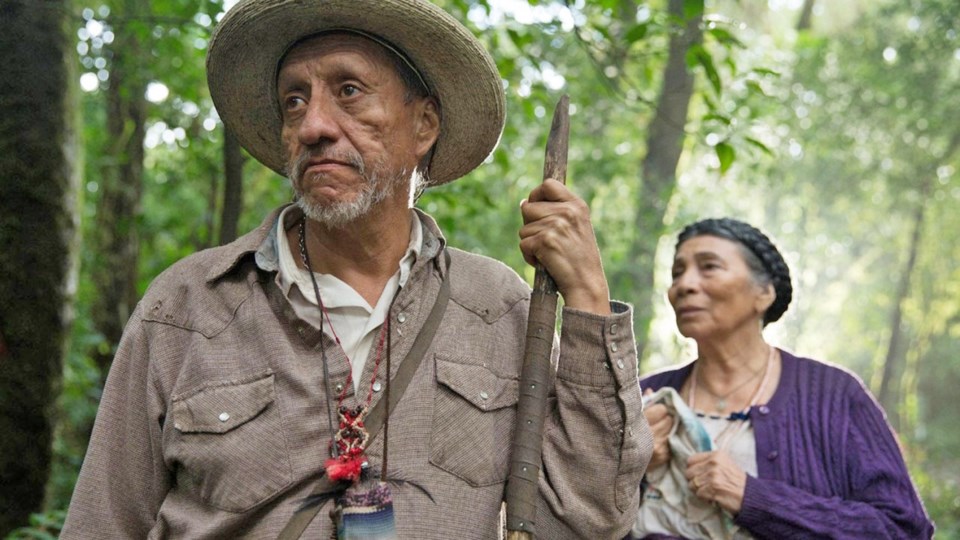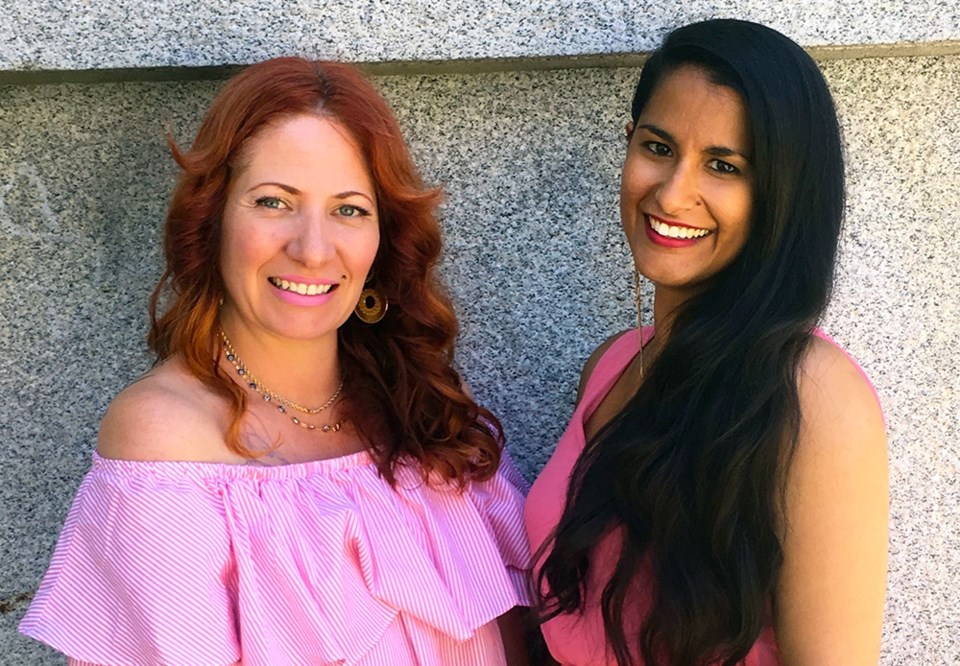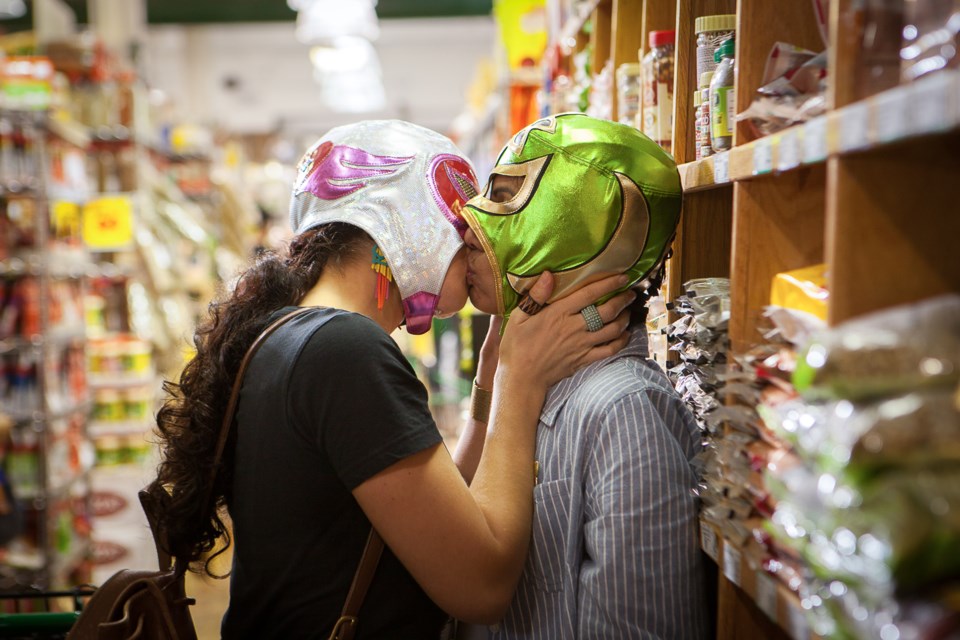Welcome to the Resistance.
You need look no further than social media to see that resistance is having a moment. Resist is the hashtag du jour when tweeting one’s displeasure with the current occupant of the White House, but it's hardly specific to American politics. As far as words go, resist is a mighty one: loaded with history, heroes and hope, it’s long been a rallying cry to push back against systems of oppression, tyranny and totalitarianism.
So, in a volatile era, when it's normal for the POTUS to tweet out bigotry-laced communiqués at three in the morning, and marginalized communities face rising tides of hatred all over the world (including a rapid increase in hate crimes against people of colour and LGBTQ+ communities south of the border), resistance is the perfect theme for the 2017 edition of the Vancouver Queer Film Festival (VQFF), a fest rooted in celebrating and empowering the global LGBTQ+ community.
VQFF is the second largest film festival in the city, and the only one in town whose guiding principle is to illuminate queer lives through film. For its 29th edition – which kicks off on Aug. 10 with a screening of the 2017 Sundance Award-winning film I Dream in Another Language (Sueno en Otro Idioma) – VQFF will screen 65 documentaries and narrative films from 17 countries, including seven Canadian premieres and a considerable concentration of cinema produced here in the 604.

Resistance is centre-stage in VQFF’s promotional material for 2017: the festival’s program guide bears an illustration of a clenched fist combined with a human heart, accompanied by the words “Your heart is the size of your fist… Love. Resist.”
“With the current political climate, if there’s any time to put resistance into our art, it’s now,” says Anoushka Ratnarajah, who shares the VQFF artistic director mantle with writer Amber Dawn. The duo began their tenure as co-artistic directors in March, and met with Reel People in the VQFF office late last month, surrounded by stacks of glossy VQFF program guides.
What does resistance look like for a festival as purpose-driven as VQFF? For Ratnarajah – who previously held the festival administrator position at Indian Summer Festival – resistance "looks like so many of [VQFF’s] films. It looks like direct action. It looks like love stories. It looks like queer people just being characters already fully realized in an existing storyline. It does also still look like coming out, but it looks like so much more than coming out. It looks like the intersectionality of our experiences. It looks at the breadth of our experiences. Resistance can mean anything.”
As incoming film festival artistic directors, resistance also meant ensuring that traditionally marginalized voices were heard, according to Dawn. “The barriers that exist within all the film industry affect queer cinema, too. And it’s not unique to film, but film is a particularly gate-kept art-form, and it’s our job to do a lot of research and look at international festivals really closely,” she says.
The festival receives a high percentage of film submissions from white, cisgender men, Dawn adds, and far fewer from women filmmakers, especially women of colour and trans women. “Every artistic director should consider relationship-building, and building trust with whoever has been underrepresented within their festival,” says Dawn, who previously held the artistic director position from 2009 to 2012. “That should be a priority.”
Immediately upon being hired, Dawn and Ratnarajah cast their gaze to festivals around the world in order to uplift and amplify underrepresented voices. “It’s great to look at Sundance and the Berlinale, and of course we do. We want excellence and those film festivals showcase excellence. But we also looked at all the quote-unquote underdog festivals, or the festivals that don’t have an international reputation, to see who’s producing work for those festivals,” says Dawn.

The result is a schedule that represents the breadth, depth and diversity of the global LGBTQ+ community and provides ample opportunities for validation, connection, and education – which are all essential to sustaining the resistance movement and inspiring change. “To see any kind of large-scale change happening where we are actually able to have places where people are safe, and not just meeting the bare minimum of safety but actually able to have fulfilling lives, that involves a huge cultural shift, and art has an integral role in that cultural shift,” says Ratnarajah.
Dawn identifies Dream Boat, a documentary about an annual gay cruise from German director Tristan Milewski, as one of her festival highlights because it touched her in ways she did not expect.
“On the surface, it’s men in cute outfits partying on a boat, looking gorgeous,” she recalls, “but then they start talking to each other, and they’re all from very different experiences, and they start talking about how lonely it can be to be a partnerless gay man, how important love and intimacy are in their lives, and how hard it is to find.
“If anyone thinks men’s party culture is vacuous,” she adds, “watch this film.”
For Ratnarajah, a standout is Maybe Tomorrow (Baka Bukas), a narrative dramedy from Filipino director Samantha Lee about best friends who fall in love with each other. Ratnarajah says Maybe Tomorrow is VQFF’s most millennial film. “We have a concept of millennials being particularly North American, but there are millennials all over the world, and to look at what young folks in the Philippines are struggling with, how they celebrate with each other, where they gather, the kinds of friendships and love-ships that they share with each other, it’s really great,” Ratnarajah says.
Lee will be in attendance for both VQFF screenings of her film.
Locally produced fare includes the Leo Award-winning documentary Antonette, which follows trans poet Antonette Rea as she rehearses for her soul-baring stage show at the 2016 PuSH Festival; A Small Part of Me, about a trans teen in Squamish who is navigating the foster system and preparing for a play; Stay Gold Man Up, a celebration of Vancouver’s monthly multi-gender drag spectacular at the Cobalt; The March Sweater, wherein five local elders speak on life, love, and aging; and The Coast is Queer, the annual crowd-pleasing program of local short films from an array of genres.
(For Reel People’s top picks for VQFF 2017, click here).
And tying it all together is that thread of resistance, says Ratnarajah, because “resistance looks all kinds of different ways. It looks like two Thai fathers trying to get dual custody of their son in Thailand [Fathers, directed by Palatpol Mingpornpichit]. It looks like Victoria Cruz, a trans activist in New York City, trying to solve the unsolved mystery of Marsha P. Johnson’s death [in David Frances’ The Death and Life of Marsha P. Johnson]. It looks like Nisha Ganatra making Chutney Popcorn, which is an archival film that we’re bringing back this year for a screening at the Queen Elizabeth Plaza, and was the first film that I saw where I was like, ‘Oh my god, a South Asian lesbian, I can’t believe this!’”
“We all access resistance, or are coming to resistance, from different places,” Ratnarajah adds. “There’s no one way to do it, and there’s no better way to do it.”
• The Vancouver Queer Film Festival runs Aug. 10-20 at venues around Vancouver. Schedule and tickets at queerfilmfestival.ca.


